The New Face Of Creep Feed Grinding
Creep feed grinding allows a hardened workpiece to be machined from the solid in a single pass, replacing milling, broaching or other types of grinding. Compact, more affordable creep feed grinding machines now make this process attractive in a wider range of applications.
Not long ago, the folks at Cobble Tufting Machine Co. in Dalton, Georgia, didn't pay much attention to creep feed grinding. Creep feed grinders were large, expensive, and mostly for machining exotic aerospace workpieces such as turbine blades, so they thought. Besides, they were getting along pretty well with conventional grinders.
Their impression of creep feed grinding would match that of a large percentage of production personnel in the metalworking industry. Creep feed grinding has been around for more than two decades, but it is not a widely used process, except in some automotive and aerospace applications, notably those involving deep slots or complex profiles in tough materials difficult or impossible to grind with conventional methods.
And the impression that most creep feed grinders are large and expensive is not an unfounded one. Compared to conventional grinding, creep feed grinding requires much greater thrust and much greater rigidity. This means heavier, more massive bases and columns, larger diameter ballscrews, heavy-duty spindle motors, larger grinding wheels, and high-pressure/high-volume coolant delivery systems.
As Leon East, a manufacturing engineer at Cobble, put it, "We saw creep feed at trade shows now and then and read about it here and there, but never saw the need." Besides, conventional grinding was what the shop knew and was familiar with. A pair of conventional grinders, for example, had been devoted to grinding critical surfaces on certain workpieces that the company produced in large numbers for its line of high-end carpet tufting machines. These parts had been made this way for years. However, a redesign of that particular component for a newly developed tufting machine proved to be a turning point that led the company to its first creep feed grinding machine—and to a whole new understanding of the possibilities for creep feed grinding.
By moving to creep feed grinding, the company expects to save almost $30,000 on a production run of 1,500 parts. A cost savings of nearly $4,000 will be realized on an order for 1,350 of the original style part, which has also been converted to creep feed grinding. Because creep feed grinding can handle parts in the hardened state, Cobble is also planning to reprocess a family of parts so these parts can be customized after heat treating. This change will help the company to reduce inventory of finished parts, make faster deliveries to customers, and avoid disruptions to the production schedule.
Carpet Capital
Dalton, Georgia, may be more closely identified with the carpet industry than Detroit, Michigan, is identified with automobile manufacturing. More than 70 percent of the carpet produced in the Unites States comes from the Dalton area, in the northwestern corner of Georgia about 100 miles from sprawling Atlanta. Companies that produce carpet are not the only ones here. Companies that manufacture the materials and equipment used in carpet production are here, too, including those making fibers, backings, dyes, adhesives and all kinds of sewing, binding, tufting and trimming machines.
Cobble Tufting Machine Co. is one of these companies. The company was founded 64 years ago and acquired by Spencer Wright Industries in 1977. Currently, the company operates four plants in the Dalton area. A sister plant in Blackburn, England, manufactures and services Cobble tufting machines for the European market.
Tufting machines, as their name implies, stitch carpet yarn into short loops, or tufts, onto a woven fabric backing. A row of needles stitches the entire width of a carpet in a single stroke, with well over a thousand needles lined up in a single machine designed to produce room-width carpets. Tufting machines operate at speeds up to 1,800 strokes per minute, with output measured in miles of carpet a day. Some machines trim the loops to form a carpet with a thick pile, or vary the loops to create stylish textures or decorative patterns that suit changing tastes.
The tufting machines produced by Cobble are the Cadillacs of the industry, having a reputation for high speed, flexibility and precision. Carpet manufacturers looking to produce the thickest, most intricately patterned or most colorful carpets most often use Cobble tufting machines. The company has been particularly successful with its line of machines that allows control of individual needles. The "individual control needle" machine greatly expands the range of intricate patterns in texture or color that can be produced, even at high speed. These machines have been very popular.
Needle Holders
A key component in these tufting machines is the needle holder—a thin, blade-like part of hardened tool steel that holds the tufting needle in place. Each tufting machine requires hundreds of needle holders. The widest machines Cobble produces require almost 1,500 holders each. The holders, which are lined up flat-side to flat-side, move up and down with each stroke of the machine, their travel guided by grooves in upper and lower guide blocks. The front and back edges of each needle holder are ground to a precisely angled and radiused contour to match the grooves in the guide. See Figure 1.
According to Mr. East, Cobble's usual way to produce these contoured edges was to rough mill them on both sides, then finish grind the form on a reciprocating surface grinder. The quality of these edges is important. A fine surface finish reduces friction when the holders move up and down against the grooves of the guide blocks, thereby reducing heat. Likewise, geometric accuracy of the edges ensures that the holders follow the grooves in the guide blocks without deviation, thus producing consistent and uniform tufts, row after row after row in the finished carpet.
Making these parts the usual way worked well, but it was often a production bottleneck. As Doug Anderson, the machine shop supervisor who works with Mr. East in Cobble's Plant 4, explains, "This plant machines most of the parts to produce three or four machines a month, working one shift with very limited overtime, so depending on the mix of models in the monthly production schedule, the number of holders we need to make can vary. Wider models require a lot more needle holders than narrower versions. Higher gauge machines, which make more tufts per inch to make a heavier carpet, require more holders than lower gauge models. Some months we could barely keep up."
What brought matters to a head was the introduction of the company's innovative line of Colortec machines in June of this year. These are the only tufting machines on the market that can stitch as many as six colors at a time, operating at the same speeds as single- or two-color machines. These machines have been a hit with carpet manufacturers because carpets with intricate color patterns—from stylish floral designs to splashy abstractions—can be produced more economically. And trends in home decoration are moving away from wall-to-wall carpeting to hardwood flooring covered with custom-cut carpet and area rugs.
Launching this new line of tufting machines gave the company an opportunity to re-engineer key components, improving their functionality as well as manufacturability. The Blackburn, England, plant, which developed the prototypes for the new line, redesigned the needle holder so that it could be made in one piece by eliminating a brazed attachment. Other features were simplified or consolidated. This new style of holder would require an entirely different manufacturing process, which was up to Plant 4 in Dalton to develop.
The design engineers in England suggested to Mr. East that creep feed grinding ought to be looked at for finishing the new holders, which still have the same radiused contour on the front and back edges. Acting on a tip from their local distributor about a new creep feed machine from K. O. LEE (Aberdeen, South Dakota), Mr. East and Doug Anderson visited IMTS 98, the big machine tool show in Chicago last year and looked at several creep feed grinders, including K. O. LEE's entry in the field, the VIGOR.
This machine was the right size, having a work surface of 10 by 24 inches and travel of 28 inches, for grinding the needle holders. It was the right size for the shop, too, with a footprint of 134 by 100 inches. "We were surprised by the price, too," Mr. Anderson reports. "Although it was priced somewhat higher than a conventional CNC surface grinder, we figured that this one machine could do the work of three conventional grinders." According to K. O. LEE, the base price of this new grinder is under $200,000, about a third less than most creep feed grinders of a similar size.
Nevertheless, the VIGOR is specifically designed for precision creep feed grinding. It is equipped with a 10-hp spindle motor capable of running up to 22,000 sfm. A standard frequency convertor maintains constant peripheral surface speed for the machine's 12-inch diameter grinding wheel. Pre-loaded linear guideways on the table and crossfeed axis increase machine stiffness. All linear way bearings, ballscrews and the spindle are lubricated by a central air/oil lubrication system that also provides positive pressure to protect these critical areas.
After checking out the machine at the show, the two gentlemen from Cobble worked more closely with Ed Holford, the local sales representative, to determine the optional equipment that would suit their application. These options included a 250-gallon high-pressure coolant system, a table-mounted diamond roll dresser interfaced to the control, an on-board wheel balancing system, and a high-pressure coolant nozzle. The machine was delivered to Plant 4 in January, 1999, making it the first VIGOR to be installed by a customer. See Figure 2.
Creep Is A Relative Term
With the new creep feed grinder in place, grinding the needle holders is no longer a bottleneck, says Mr. Anderson. "Creep feed is a much more productive process, allowing us to meet our monthly production requirements and still have some machine time to spare, but we already have plans to make use of that extra capacity."
Compared to the swift, back and forth motion of a conventional reciprocating surface grinder, the creep feed process does appear to creep. At Cobble, the angled surface on the front and back edge of each holder is rough ground at 15 ipm from the solid in one pass. A finish pass at a higher feed rate completes the grinding process. The old-style holders are made from 01 tool steel, and the new style holders are made from A2 tool steel. Both styles of holders are sent out to be heat treated to a hardness of 60 to 62 Rc.
Parts are loaded in a two-station fixture (see Figure 3), which is bolted to the table of the grinder. The first station is for grinding the front edge of a holder. The second station, parallel to the first, is for grinding the holder's other side. Two parts are loaded at a time, one of them already having been ground on one side in the first station during the previous cycle. Pneumatic clamps secure the parts for grinding.
The front edge of the workpiece in station one is ground at full depth from end to end at 15 ipm. Then the part in the second station is rough ground. At this point, the wheel dressing cycle occurs. The freshly dressed wheel then takes a finish pass at 25 ipm on the part in station two. The operator removes this finished part and replaces it with the part just ground in the first station, inserting it blank side up, then loads an unground part in the first station. The sequence repeats until the production order is complete. According to Mr. Anderson, a finished part comes off the machine about every three minutes.
"The purpose of the finish pass after grinding the second edge is to make sure the first and second edges are ground identically," Mr. Anderson explains. "Some wheel wear occurs during the two `rough' grinds, and it shows up as a slight taper on the second grind." This finish pass removes 0.00025 inch of material.
The dressing cycle takes off 0.001 inch from the surface of the wheel. Dressing is performed with a diamond plated wafer wheel, with a 0.088 inch radius at its edge. The dressing wheel rotates at 80 percent of the wheel's speed as it follows a programmed path across the periphery of the grinding wheel, thus restoring the wheel's contour. The dressing unit is integrated with the machine's NUM control unit. The dressing path is programmed at the control panel.
The wheel itself is a standard Norton TG1203 creep feed grinding wheel, 0.5 inch wide and 12 inches in diameter. Grinding wheels designed for creep feed are more porous than standard wheels to allow coolant to penetrate the surface and be carried to the wheel/workpiece interface. Likewise, the grain structure is designed to remain sharp as it breaks down during creep feeding. The control unit maintains the wheel's constant surface speed of about 5,700 sfm, rotating a 12-inch wheel at 1,750 rpm and 2,200 rpm when the wheel is down to 10 inches in diameter and due for replacement. According to Mr. Anderson, a 120-grit wheel was specified for the exceptionally fine surface finish required on the ground edges of the needle holders.
"Coolant was another element in the creep feed grinding process that we had to rethink," Mr. Anderson remarks. "We initially experienced some surface burns before we got used to the process," he admits. As the shop discovered quickly, both high-volume and high-pressure coolant delivery is required for proper creep feed grinding. "We have a high-pressure coolant nozzle that delivers flood coolant at 490 psi or so, but making sure the nozzle is in the right place is important. We haven't had any problems with burned workpieces after those early days," he reports.
The force of the coolant not only penetrates the wheel so it can reach the work zone effectively, but it also helps blast away material that would otherwise load the grinding wheel surface and rub the workpiece surface, creating frictional heat. Creep feed grinding depends on a clean sharp wheel surface for effective cutting action and protection of the workpiece.
The shop uses a semi-synthetic coolant, TRIM EP320, which is especially formulated for creep feed. Coolant is delivered at 18 gpm and is continually recycled through a Cyclotron coolant system situated behind the grinder. Paper filters remove particulates as small as 5 microns.
Because the shop is still producing both the old and the new style of needle holders, it has a two-stage clamping fixture for each style. The fixtures can be swapped in and out in about 45 minutes, including time for indicating position, says Mr. Anderson. The same sequence of grinding passes and dressing cycles is followed for both types of workpieces.
Savings
"Savings are impressive," says Mr. East. He calculates that creep feed grinding saves $2.90 per piece on the original style needle holder, by eliminating the rough milling operation and reducing total finish grinding time. He cites a recent order for this part that totaled 1,350 pieces. "We will realize a savings of $3,900 on this one job alone," he points out.
With the new style holder, the shop does not have a cost history to make a comparison. "The prototype for our new Colortec machine was made in our sister plant in Blackburn, England, and we know the cost to them for making this part," Mr. East notes. "Their cost to rough mill and crush grind this part was $21.78 each. We have eliminated the rough milling operation, and we are now creep feed grinding the finished part for $2.33 each. This is a savings of $19.45 per part. With a production run of 1,500 pieces, the savings are almost $30,000."
Nevertheless, Mr. East stresses that the decision to implement creep feed grinding was based on growing production requirements. "Instead of adding another conventional grinder to the two already in place, we have one machine doing the work of three, with capacity to spare."
The two CNC surface grinders replaced by the creep feed machine have been moved to another part of the shop, where they bring much needed grinding capacity to a variety of small parts that must be finish-ground. Because creep feed grinding eliminated a rough milling operation on the needle holders, machining center time has also been freed up for other applications.
New Possibilities
The ability of creep feed grinding to machine workpieces in a hardened condition also opens possibilities that Mr. East and Mr. Anderson intend to take advantage of. As Mr. Anderson explains, "Depending on how a tufting machine is configured, each needle holder must be notched for an upper, middle, or lower position on the machine. The location of the notch determines where it can be positioned. Right now, we mill these notches before heat treating."
The notch is about 0.25 inch deep and 0.25 inch wide. Once the holder has been notched, it can only be used in that position on the assembled machine. "The trouble is, we never know exactly how many of each kind will be needed in assembly or to repair a machine in the field," Mr. Anderson says. Frequently, the mix of finished pieces in inventory doesn't match current requirements and a small batch of one kind or another must be produced, usually under rush conditions.
"What we intend to do is use creep feed grinding to make the notch after heat treating. That way, we wouldn't be customizing the holders until we know the exact number ordered. Instead of inventorying all three kinds, we would only stock a limited number of unnotched holders and customize just enough pieces to meet a current order." The result would be faster turnaround on orders, especially those for repair jobs that are keeping a cus-tomer's machine out of commission. Inventory could be reduced significantly. Shop production schedules wouldn't have to be disrupted.
Fixtures for grinding the notches are being developed, and Mr. Anderson hopes to see the plan implemented some time early next year.
Cellular Development
Installing a creep feed grinding machine is not the only effort Cobble is making to streamline production of its needle holders. In fact, the part of the shop where the new grinder is located has become a high-tech corner in Plant 4. Eventually, it will be home to an integrated cell dedicated to producing these important components.
On one side of the creep feed machine, in space once occupied by the old conventional grinders, is a newly constructed enclosure housing a ram-type electrical discharge machine (EDM). The EDM process is used to erode a slot on the side of the holders. This EDM is an older model; a new EDM unit is likely to be added because today's generation of EDMs is much more efficient. A wire EDM is also being considered for an operation currently subcontracted. The enclosure is climate controlled to protect the accuracy of any EDM installed within it.
On the other side of the grinder is a Daewoo DMH-400 horizontal machining center, installed two months after the new grinder. This machine, the first horizontal machine in the shop, performs all milling and hole drilling on the needle holders. This machine is equipped with a two-station pallet changer for pallets mounted with pedestal-type fixtures. Twelve holders can be clamped on each side of the pedestal fixtures. Rotary tables on the pallets index the pedestal, allowing all 48 holders to be machined complete before a pallet change.
When finishing touches on the cell are completed, predicts Mr. Anderson, the needle holders will be processed entirely within the cell, leaving it only for heat treating. Two operators will be able to keep all of the machines in the cell running, once training is completed. Designed for efficiency and high productivity, the cell's output will be sufficient to meet demand for the needle holders, even working only one shift in keeping with the company's policy.
No Magic Carpet
Other areas of the plant are also being updated. For example, aging manual machines are being replaced with CNC machining centers—a program that has been going on for several years now.
Cobble's efforts to improve its products and its manufacturing process require a sustained commitment. There's no magic carpet that can ride over the hard work and investment involved in this effort, even in the carpet capital of the country.
Related Content
Grinding Wheel Safety: Respect The Maximum Speed
One potential source of serious injury in grinding comes from an oversight that is easy to make: operating the wheel in an over-speed condition.
Read MoreChoosing a Five-Axis Machine Tool With Automation in Mind
While much focus is placed on the machinery that moves parts, the features most important for automating five-axis machining are arguably found in the machine tool itself.
Read MoreChoosing The Right Grinding Wheel
Understanding grinding wheel fundamentals will help you choose the right wheel for the job.
Read MoreWhen Organic Growth in Your Machine Shop Isn’t Enough
Princeton Tool wanted to expand its portfolio, increase its West Coast presence, and become a stronger overall supplier. To accomplish all three goals at once, acquiring another machine shop became its best option.
Read MoreRead Next
The Cut Scene: The Finer Details of Large-Format Machining
Small details and features can have an outsized impact on large parts, such as Barbco’s collapsible utility drill head.
Read More


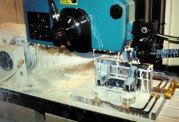
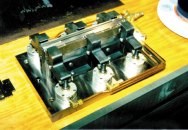

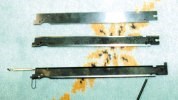
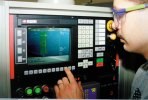
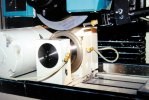

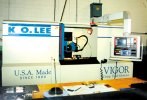









.png;maxWidth=300;quality=90)














